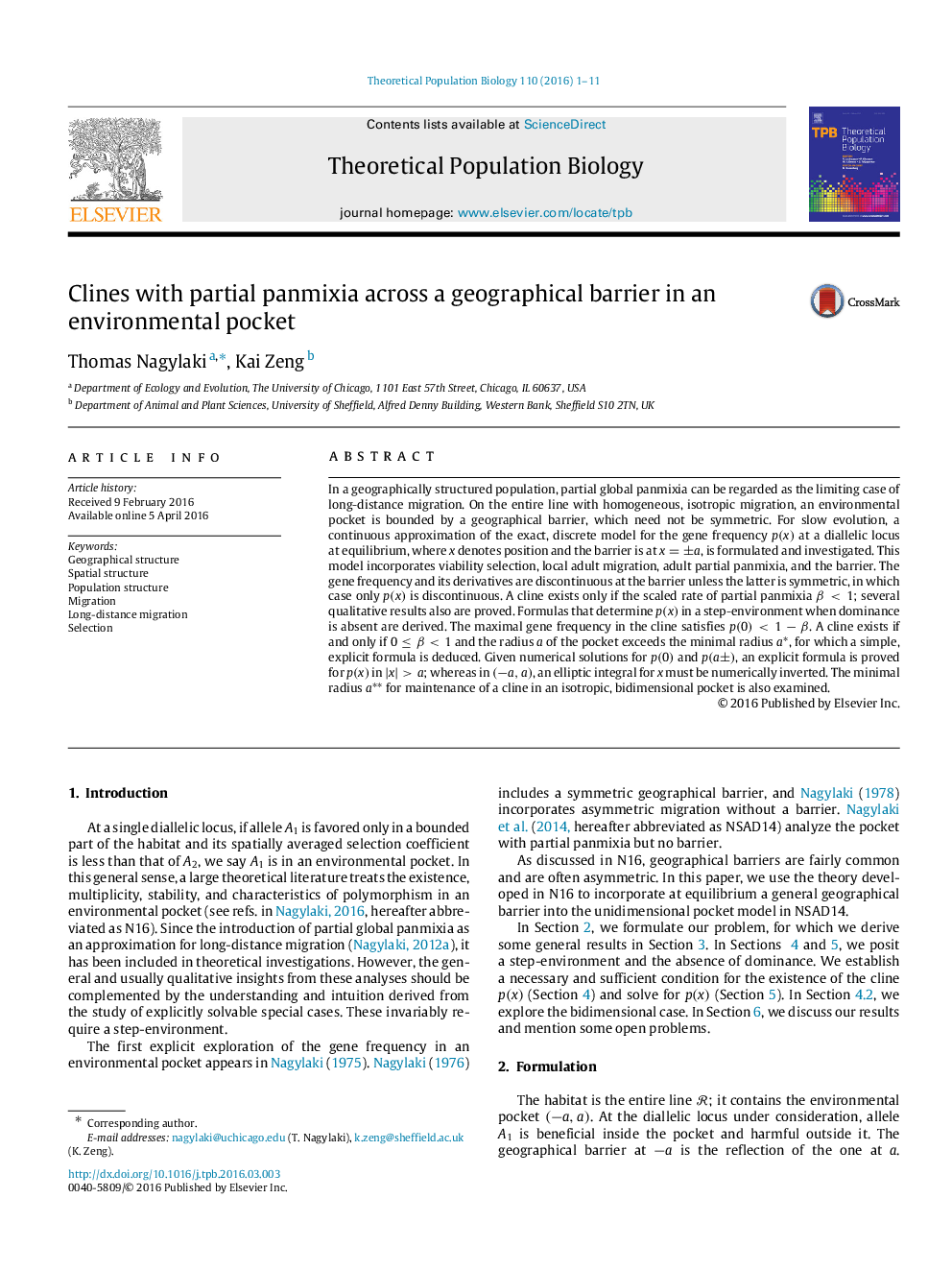| کد مقاله | کد نشریه | سال انتشار | مقاله انگلیسی | نسخه تمام متن |
|---|---|---|---|---|
| 4502257 | 1624142 | 2016 | 11 صفحه PDF | دانلود رایگان |
In a geographically structured population, partial global panmixia can be regarded as the limiting case of long-distance migration. On the entire line with homogeneous, isotropic migration, an environmental pocket is bounded by a geographical barrier, which need not be symmetric. For slow evolution, a continuous approximation of the exact, discrete model for the gene frequency p(x)p(x) at a diallelic locus at equilibrium, where xx denotes position and the barrier is at x=±ax=±a, is formulated and investigated. This model incorporates viability selection, local adult migration, adult partial panmixia, and the barrier. The gene frequency and its derivatives are discontinuous at the barrier unless the latter is symmetric, in which case only p(x)p(x) is discontinuous. A cline exists only if the scaled rate of partial panmixia β<1β<1; several qualitative results also are proved. Formulas that determine p(x)p(x) in a step-environment when dominance is absent are derived. The maximal gene frequency in the cline satisfies p(0)<1−βp(0)<1−β. A cline exists if and only if 0≤β<10≤β<1 and the radius aa of the pocket exceeds the minimal radius a∗a∗, for which a simple, explicit formula is deduced. Given numerical solutions for p(0)p(0) and p(a±)p(a±), an explicit formula is proved for p(x)p(x) in |x|>a|x|>a; whereas in (−a,a)(−a,a), an elliptic integral for xx must be numerically inverted. The minimal radius a∗∗a∗∗ for maintenance of a cline in an isotropic, bidimensional pocket is also examined.
Journal: Theoretical Population Biology - Volume 110, August 2016, Pages 1–11
